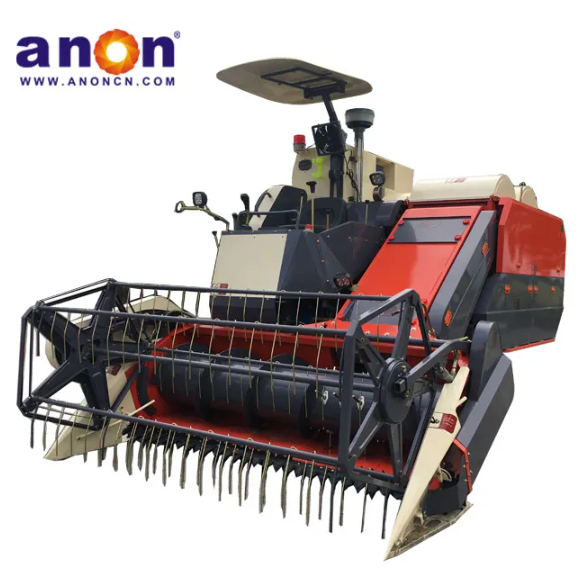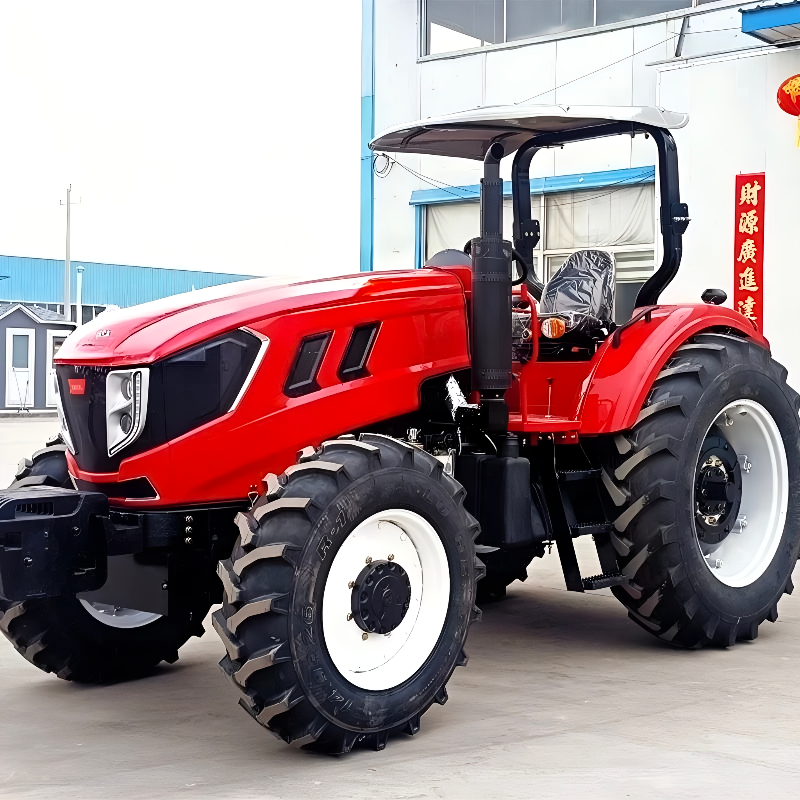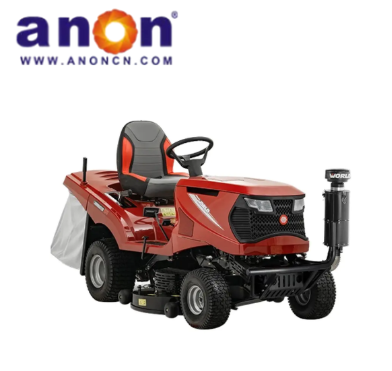Introduction
In agriculture, soil tillage is very important. A rotary tiller is a kind of farming equipment used for tilling the soil. It can save you time, effort, and resources, making farm management easier. In this article, I will provide detailed information about rotary tillers, hoping to offer some advice to help you choose the right one.

What is a Rotary Tiller?
A rotary tiller is a farming equipment that works by attaching to a tractor using a three-point hitch. The tractor powers the main working parts of the tiller, which are the blades, to perform the tilling.
What is the Working Principle of a Rotary Tiller?
The working parts of a rotary tiller are the blades, which vary in width and shape based on your needs. Several blades are evenly attached to a blade shaft. When in use, the tractor’s power take-off (PTO) drives the blade shaft to rotate. The blades, fixed to the shaft, spin forward at a certain speed, cutting, breaking up, and turning over the soil. This process loosens, tills and mixes the soil, creating good soil conditions for sowing or planting, and is efficient and flexible.
What is the Function of a Rotary Tiller?
Soil crumbling
The blades of a rotary tiller can break up large clumps of soil, making the soil finer. This helps seeds to germinate and allows crop roots to grow better.
Soil turning
When a rotary tiller is in use, it turns the soil, bringing the deeper layers to the surface and burying the top layer underneath. This improves soil aeration and disrupts pests’ habitats, reducing the risk of pests and diseases. Additionally, by changing the soil’s tillage depth, enhances the soil’s ability to retain water and moisture.
Land leveling
A rotary tiller combines the functions of a plow and a harrow, leaving the soil smooth and level after tilling. This helps improve seedling emergence and growth speed, leading to higher crop yields.
Fertilizer mixing
A rotary tiller can also mix the fertilizer you spread on the soil’s surface into the soil itself, boosting soil fertility. This also prevents the seedlings burnt by fertilizer, greatly increasing the survival rate of your crops.
Stubble management
Additionally, a rotary tiller can clear crop stubble and weeds, allowing them to decompose into organic biomass fertilizer. By shredding the stubble and mixing it with the soil, it speeds up their decomposition, boosting soil fertility.
Types of Rotary Tiller
Based on the drive mechanism, rotary tillers can be divided into center-drive and side-drive types. The structure of each type differs because of the location of the drive system.
Center-Drive Rotary Tiller

In a center-drive rotary tiller, the drive mechanism is located in the middle of the tiller. It uses gears to transfer power from the engine directly to the blade shaft. This setup drives the blades to work, but it also leaves a space in the middle of the blade shaft.
In a rotary tiller with a center-drive mechanism, the drive system is located in the middle of the blade shaft. This makes the machine more balanced and sturdy, allowing it to handle larger workloads and reducing the chance of misalignment. Power is transferred directly from the center to the rotating blade shaft, minimizing power loss. Therefore, center-drive tillers are generally used in situations where high pulling power is needed.
Because a rotary tiller’s center of gravity is too far forward, the machine can be unstable during operation. Therefore, center-drive rotary tillers usually operate at lower speeds. They are also not very suitable for long-distance transport or movement.
Side-Drive Rotary Tiller

In a side-drive rotary tiller, the drive mechanism is located on one side of the tiller. It uses a drive shaft to transfer power from the engine to the side drive system. Then, the drive shaft and universal joint drive the blades to work.
The side-drive mechanism makes the overall structure of a side-drive rotary tiller more compact, helping it stay stable even at high speeds. Because it is lighter, it requires less power from the tractor and is generally cheaper than center-drive tillers. Its size and design also make it easier to transport and move.
Side-drive systems usually use chain drives, with power transferred from one side. The components can wear out quickly, requiring frequent replacement and maintenance. Side-drive rotary tillers also have more energy loss compared to center-drive tillers. Additionally, it’s harder to control the tilling depth with a side-drive rotary tiller.
According to the working structure, rotary tillers can be divided into horizontal, vertical, drive, and traction rotary tillers.
Horizontal Rotary Tiller
A horizontal rotary tiller features a horizontally positioned blade shaft that cuts and stirs the soil as it rotates. It offers strong soil-crushing ability and creates a smooth, level surface after tilling. This type of tiller is widely used in open fields and protected agriculture environments like greenhouses.
During operation, the blade shaft is powered by the tractor’s PTO (power take-off) and rotates at high speed. As the tiller moves forward, the blades rotate and cut through the soil in a straight line. Each blade cuts off soil clods and throws them backward. The clods then hit the cover and leveling board, break apart, and fall back to the ground. The leveling board smooths the surface as the tiller advances.
A horizontal rotary tiller can crush soil effectively and leave the surface well-leveled. It makes full use of the tractor’s power and allows you to complete tilling and harrowing in one pass, saving both time and fuel.
Vertical Rotary Tiller

A vertical rotary tiller is a type of tillage machine that uses blades or teeth rotating around a vertical shaft.The blade of the vertical rotary tiller works perpendicular to the ground.
Powered by the tractor’s PTO, the blades spin at high speed around the vertical axis. As the blades cut into the soil, they break up large clods. The thrown soil hits the mudguard and other parts, breaking further and spreading evenly across the surface. The special epicycloid motion of the blades ensures that the soil is finely crushed and evenly tilled, creating a loose and well-prepared seedbed.
Vertical rotary tillers offer deep tillage, even soil fragmentation, and keep the upper and lower soil layers from mixing. They are well-suited for wet paddy fields, deep tillage, and land reclamation. However, they have some limitations, such as weaker soil coverage and slower working speed.
Driven Rotary Tiller
A driven rotary tiller is a type of tillage machine with its own power source, so it does not rely on a tractor for operation.
It uses an independent engine to rotate the blades at high speed. The blades cut into the soil, break up clods, and throw the soil backward. When the soil hits the mudguard, it breaks down further. This process mixes the soil with fertilizer and leaves a level surface, ideal for fine cultivation.
Driven rotary tillers are perfect for small plots of land, such as home gardens or small farms. They can also be used for inter-row weeding and tilling, helping avoid damage to crops or structures that large machinery might cause.
Traction-type rotary tiller
A traction-type rotary tiller is an agricultural machine that is connected to a tractor through a traction device and driven by the tractor to complete the tillage task.
A traction-type rotary tiller is connected to a tractor through a traction device. The power of the tractor is transmitted to the working parts of the rotary tiller through the transmission system, driving the blade to rotate around the vertical axis or horizontal axis. The blade cuts into the soil and breaks up the soil. The thrown soil clods collide with the fender and other parts and further break up and evenly cover the surface, thereby achieving the purpose of tillage.
A traction-type rotary tiller can complete operations such as ditching, digging, conveying and separation, stem and vine removal, and centralized loading at one time, and is suitable for a variety of complex tillage needs.
How to Choose a Rotary Tiller?
If you need to prepare land for dry-seed planting or planting in paddy fields, you should choose a center-drive rotary tiller. It is effective at breaking up and leveling the soil, creating a good seedbed condition for both dry and paddy fields.
For tasks like clearing shrubland, marshes, and overgrown areas, you should choose a center-drive rotary tiller. The powerful center-drive tillers are better suited for tackling more challenging terrain.
For crops with deeper root systems, you should choose a center-drive rotary tiller. It can till the soil to a greater depth than a side-drive tiller, which helps prevent crops from falling over.
If you need to till in tight spaces like orchards and greenhouses, a side-drive rotary tiller is a good choice. Its compact and flexible design allows it to work effectively in narrow areas.
For light tilling tasks, a side-drive rotary tiller is sufficient. It can efficiently handle shallow soil without needing deep tilling.
Choosing the right blades for rotary tillers is very important. Blades are a key part, and factors like size, hardness, rotation radius, and angle affect the quality of tilling. Select blades with the right size and hardness so they cut into the soil at the correct angle, ensuring efficiency and durability.
If you need to clear uncultivated or loose soil, you should choose a chisel-shaped blade. It has a cutting edge on the front and works well for digging into the soil. For hard soil, opt for a right-angle blade. It has a wider and stiffer body, making it better for tough conditions. However, both of these blades can get tangled with grass. If you are working in grassy areas or paddy fields, a curved blade is a good choice. It cuts through grass easily and works well in both wet and dry conditions.
What is the Maintenance of a Rotary Tiller?
Before and after the operation, remember to tighten all screws and nuts on the machine to ensure it works properly. Regularly check the wear on the blades and the seals at both ends of the blade shaft. After finishing work, promptly clean mud and oil from both inside and outside the machine, especially the gearbox. Add lubricating oil as needed and inspect the bearings and seals on the blade shaft. Proper maintenance will extend the machine’s lifespan.
Future Trends in Rotary Tillers
Intelligent technology is becoming more common, and soon it will also be used in rotary tillers, making them more intelligent and automated. For example, rotary tillers could use big data to analyze and implement the best tilling plans. Additionally, there is a trend towards low-carbon technology, so future rotary tillers will focus more on energy efficiency and environmental protection.
Conclusion
I have introduced a lot about rotary tillers, so you should now have a good understanding and know what to look for when buying one. At ANON, we have been dedicated to exporting agricultural machinery for many years. Feel free to contact us for the most professional advice.
FAQs
What are the benefits of using a rotary tiller with a tractor in agricultural operations?
A rotary tiller can efficiently and effectively complete your tilling tasks. Compared to traditional tools, it saves time and effort. You can also change the blades to adapt to different working conditions, making it quite versatile.
What is the difference between a rotary tiller and a harrow?
If you are working on hard soil and require intensive primary tillage to prepare the soil for better yields, a rotary tiller is a good option. But, if you are looking to level the soil without damaging the nutrients in the deep soil, a power harrow is a match. So, the selection solver depends on your requirements.
What is the difference between a cultivator and a rotary tiller?
Rototillers are generally used to create new garden beds, whether they are breaking ground or large clods, digging out stones, or giving clay soil a deep tiling. Cultivators, in contrast, are better for working established garden beds with their ability to loosen the surface of soil and help prepare seed beds.
What do you use a rotary tiller for?
For example, a rotary tiller is a power tool that uses rotating blades to break up soil and is most commonly used on larger landscapes to prepare seed beds for planting.








